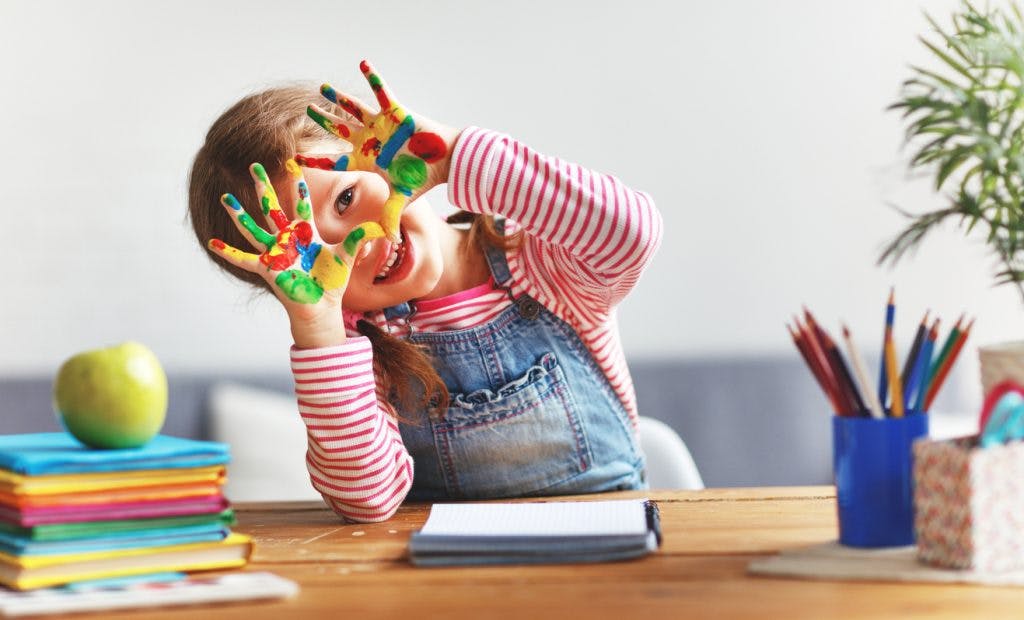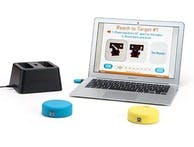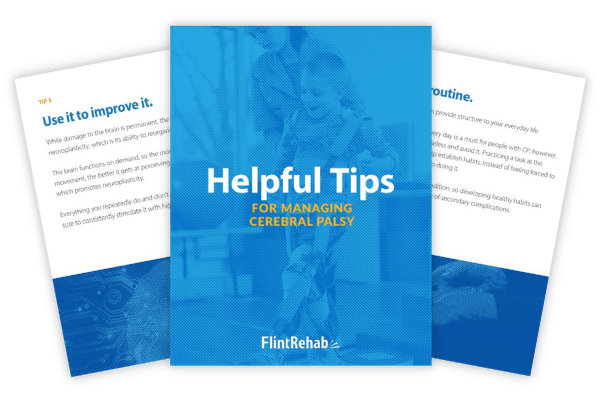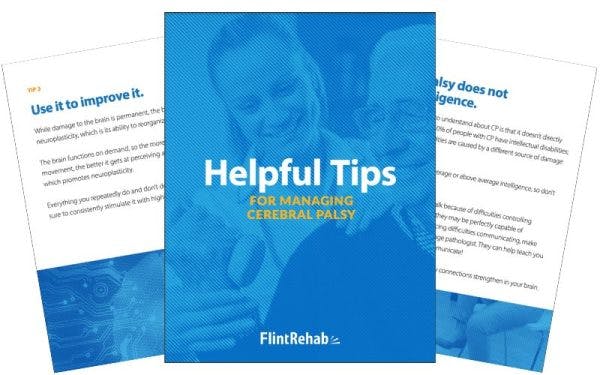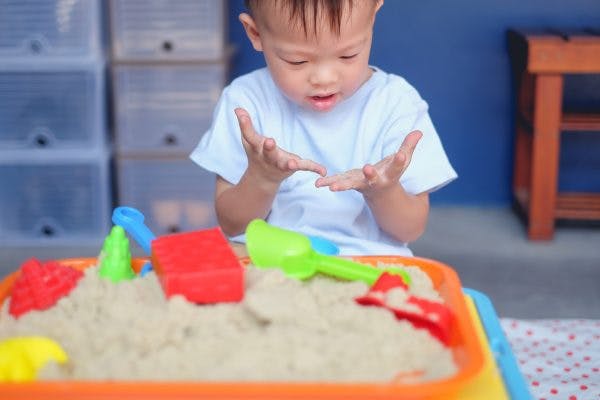Hand exercises for cerebral palsy can take various forms, ranging from repetitively practicing specific hand movements to consistently molding playdough into different shapes. The best hand exercises focus on targeted skills, are challenging but not overly difficult, and are engaging enough to be practiced on a regular basis.
This article will provide a few fun activity ideas to encourage fine motor skills among children with cerebral palsy. An overview of how practicing hand exercises may help improve hand functions is also included.
Importance of Practicing Hand Exercises for Cerebral Palsy
Children with cerebral palsy often experience difficulties with hand functions, such as strength, range of motion, precision, and dexterity. This is because individuals with cerebral palsy may have experienced damage to the areas of the brain involved in these functions before, during or shortly after birth.
Fortunately, the brain has the ability to adaptively rewire itself through the process of neuroplasticity. When a task is practiced repetitively, the brain is able to create and strengthen neural pathways associated with that task. This allows healthy areas of the brain to take over functions that were previously housed in damaged areas.
Every movement stimulates the brain, but consistent repetitions will let the brain know that there is a demand for the associated functions. The more frequently a specific action is performed, the more the brain will reorganize itself and strengthen the neural pathways used for that function.
Therefore, in order for individuals with cerebral palsy to improve hand functions, it is vital to consistently and repetitively practice tasks involving those functions. While rote hand exercises certainly can spark improvements, it is also possible (and more fun) to activate neuroplasticity through engaging games and activities.
Hand Exercises for Cerebral Palsy
Focusing on play-based hand exercises for cerebral palsy can be extremely beneficial. Not only do children learn best through play, but play is often so enjoyable that they can stay engaged for extended periods of time.
Therefore, using play can encourage children to practice hand exercises more frequently than focusing on more traditional hand exercises, which are likely less engaging. For this reason, the following list of hand exercises for cerebral palsy contains mostly play-based exercises, with just a few conventional exercises mixed in.
1. Building with Blocks
Building with blocks can be an excellent way to build fine motor skills. Individuals have the opportunity to practice grasping and manipulating the blocks, as well as to precisely position them into place.
As skills build, try using smaller blocks, as these will be more challenging to manipulate. Legos or magnetic tiles can be used as well. Following directions to create a specific structure may also challenge cognitive skills, such as visual memory and problem solving, making this a versatile therapeutic activity.
2. Creating Artwork
Hand functions are essential for using markers, paints, scissors and glue to create artwork. Arts and crafts activities can allow children to practice grasping and manipulating variously shaped utensils, strengthen hand muscles, and experiment with precision.
Encouraging children to use different pressures and stroke lengths when drawing or painting can result in a more comprehensive hand exercise. Additionally, squeezing out craft glue and cutting thicker materials, such as cardstock, can boost hand strength.
3. Making Jewelry
Stringing beads to create a necklace or bracelet can be a great way for children with cerebral palsy to work on developing their fine motor skills. Not only does this encourage fine motor precision, but it also addresses bilateral coordination, or the ability to use both sides of the body to accomplish one goal.
Start by stringing large beads on a pipe cleaner, and progress to using smaller beads and a thin string to increase the challenge. To practice picking up objects between the thumb and pointer finger, consider beginning with an assortment of beads and sorting them one by one into a bead organizer.
4. Molding and Sculpting
Molding playdough into different shapes is one of the best hand exercises for cerebral palsy that targets fine motor strength. Flattening, rolling, squeezing, and sculpting can strengthen the muscles of the hands and fingers. Furthermore, using tools provided in a playdough kit can provide even more ways to work on building fine motor strength and dexterity.
Mix it up by trying clay, slime, or kinetic sand. Some may even enjoy using a recipe to make playdough, which can require even more strength. Using therapy putty can also be helpful, as it comes pre-labeled with different levels of resistance.
5. Playing Games
Fine motor skills are essential for playing many different games. Here are a few of the many games that can be used to improve hand functions:
- Connect 4: manipulating game pieces into slots requires dexterity and precision
- Trouble: pressing the dice roller can improve hand strength, while grasping and moving game pieces requires fine motor precision
- Perfection: manipulating and placing pieces involves precision and speed
- Jenga: removing and gently placing blocks requires fine motor precision
- Pop the Pig: rolling dice, sliding small game pieces through the pig’s mouth slot, and pressing on the pig’s head to “pop” it makes this game a well-rounded activity for improving hand functions
Any games involving handling cards, moving small game pieces and/or manipulating objects can be used as a cerebral palsy hand exercise. Gamified rehabilitation devices, such as the MusicGlove, can also be beneficial.
Depending on the child’s current skill level, some games may be more appropriate than others. However, many games, such as Jenga and Connect 4, come in jumbo versions. These may be more suitable for those who initially struggle to grasp and manipulate standard-sized pieces.
6. Food Play
From decorating foods to making interactive snacks, there are a number of ways to integrate hand exercises into food-related activities. Here are a few examples:
- Sorting candy: buy a favorite candy, such as Skittles or M&M’s, and pick up each candy individually to sort by color
- Adding toppings: try arranging different toppings on pizza, decorating cookies, or squeezing out different types of sauces for dipping
- Using utensils: use a butterknife to spread peanut butter on crackers or chop a peeled banana, try using a toothpick to poke precut fruits or cheeses, or help with stirring ingredients into a simple recipe
- Snack-time fun: string cheerios on a toothpick or skewer, place raisins on top of celery stuffed with peanut butter, or dip pretzel sticks into peanut butter to use for “catching” goldfish
By adding hand exercises into a normal part of one’s daily routine, it is easy to practice targeted skills without having to designate a specific time for exercise. This can help individuals be more motivated to complete their exercises on a regular basis, and make exercising more enjoyable.
7. Playing at the Beach
The beach is a wonderful place to practice a variety of hand exercises for cerebral palsy. Between digging in the sand, making sandcastles, and collecting seashells, playing at the beach can involve a number of hand functions.
Wet sand is extremely easy to mold. Practicing squeezing, pressing, and scooping it can be a great way to strengthen the hand muscles. Grasping small items, such as seashells, rocks, and sandglass can also improve hand functions. Practicing placing these items carefully onto a sandcastle or arranging them in the sand can improve dexterity and manipulation skills.
The hand exercises outlined above can be a great starting point for individuals with cerebral palsy to begin thinking creatively about how to boost hand functions. Individuals, especially children, tend to be more motivated to complete activities that are enjoyable, so intertwining fun activities with hand exercises can be a great way to promote improvements. An occupational therapist can help children learn more about what hand exercises and activities may be most beneficial.
Understanding Hand Exercises for Cerebral Palsy
Almost any activity that involves the hands can be transformed into a hand exercise for cerebral palsy. While traditional exercises can promote improved hand functions, using unique and enjoyable hand exercises like those described above can also be beneficial.
Focusing on integrating hand exercises into everyday tasks, such as cooking or play, can make it easier to exercise the hands on a regular basis. Talking with an occupational therapist can help children discover even more personalized hand exercises for cerebral palsy that can be both engaging and beneficial.

